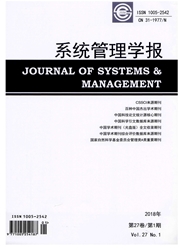

 中文摘要:
中文摘要:
将供电和供水系统抽象为异质网络,依据节点间功能传输关系,构建关联失效动力学模型,研究关联作用条件下,节点失效的动力学演化特征。综合考虑供电、供水机构收益损失、修复费用和电、水缺失造成的用户损失,建立了修复策略规划模型,并应用多阶段决策和遗传算法提出求解最优策略的一般方法。仿真结果表明,少量节点物理失效极易引起大量节点功能失效;相同物理失效发生在不同时刻,造成的损失存在差异,对应最优修复策略不同。
 英文摘要:
英文摘要:
Electric power and water supply infrastructures are coupled heterogeneous networks.Base on the function dependency between nodes,a dynamic model is developed to describe the failure propagation process with electric-water interactions.Simulation result shows that physical failure of limited number of nodes may cause functional failures of large number of nodes.Considering the suppliers' revenue loss,repairing cost and user's loss,we propose a planning model of repair strategy,and provide a general method to solve the model and develop optimal strategy using multistage decision-making and genetic algorithm.To a given cluster of nodes the optimal repair strategy is different when the failure time changes.
 同期刊论文项目
同期刊论文项目
 同项目期刊论文
同项目期刊论文
 Emergency Management Organizational Structure Optimization Based on Information Transmission Reliabi
Emergency Management Organizational Structure Optimization Based on Information Transmission Reliabi Real-Time Pricing Control on Generation-Side: Optimal Demand-Tracking Model and Information Fusion E
Real-Time Pricing Control on Generation-Side: Optimal Demand-Tracking Model and Information Fusion E 期刊信息
期刊信息
